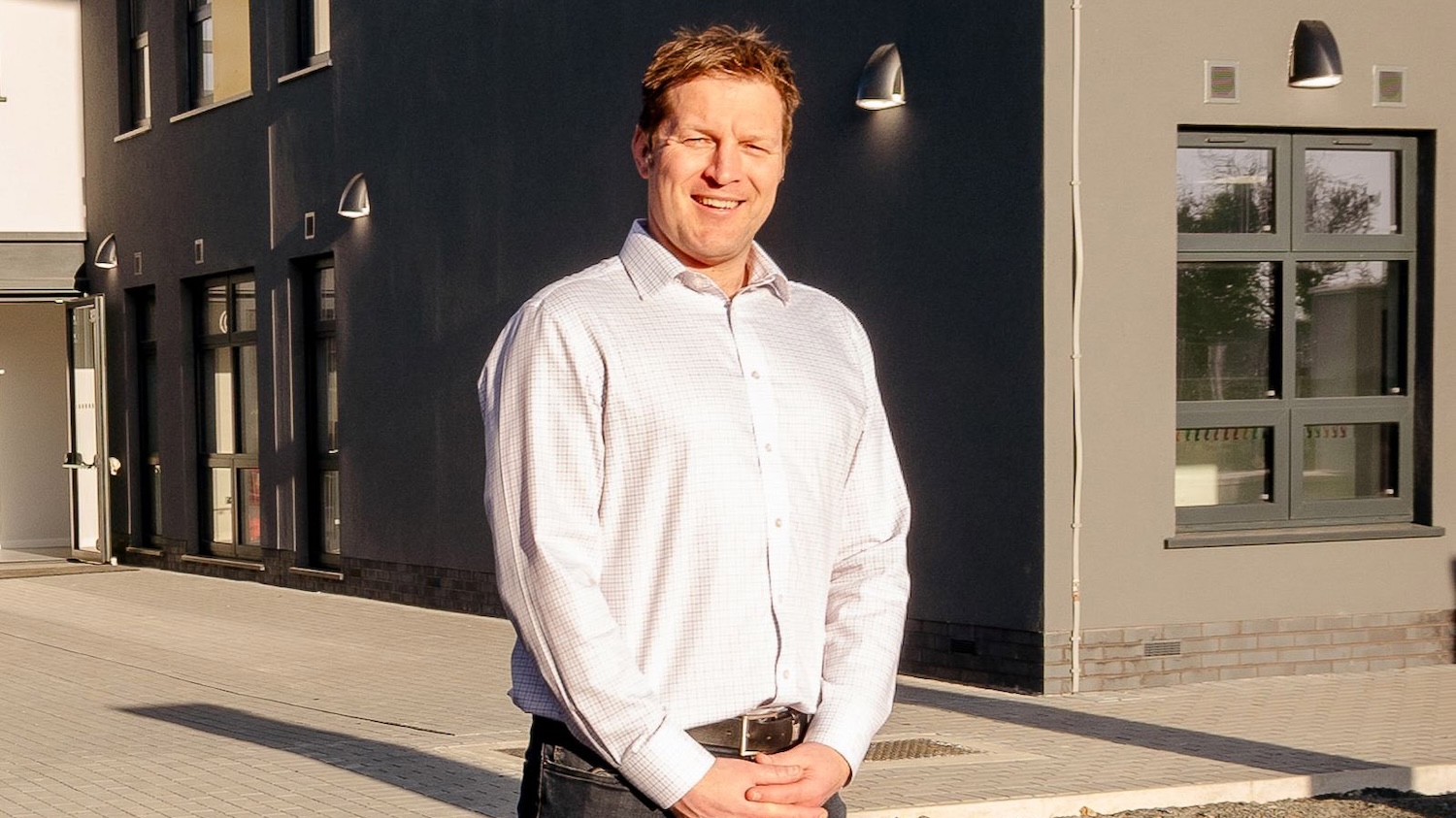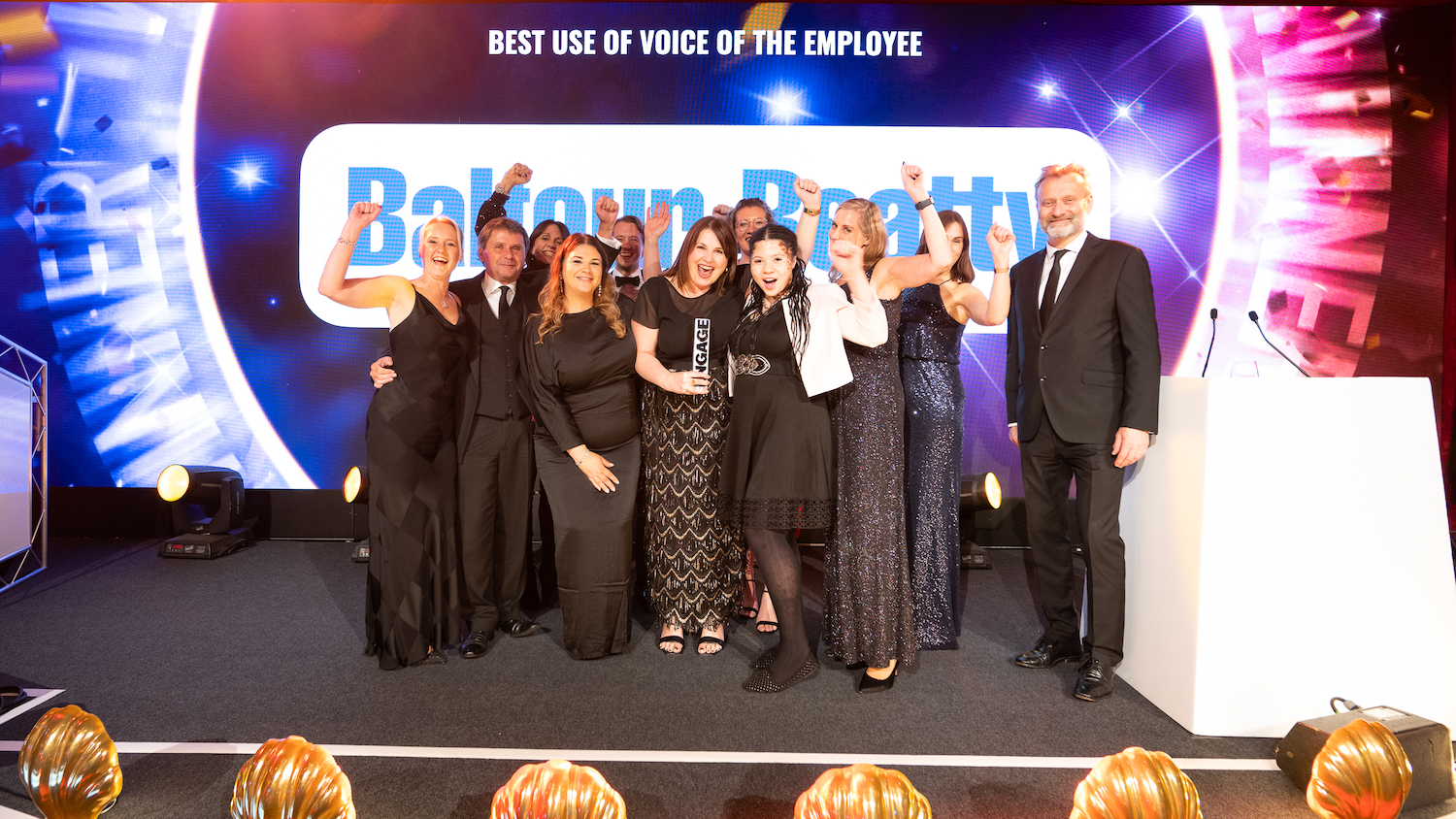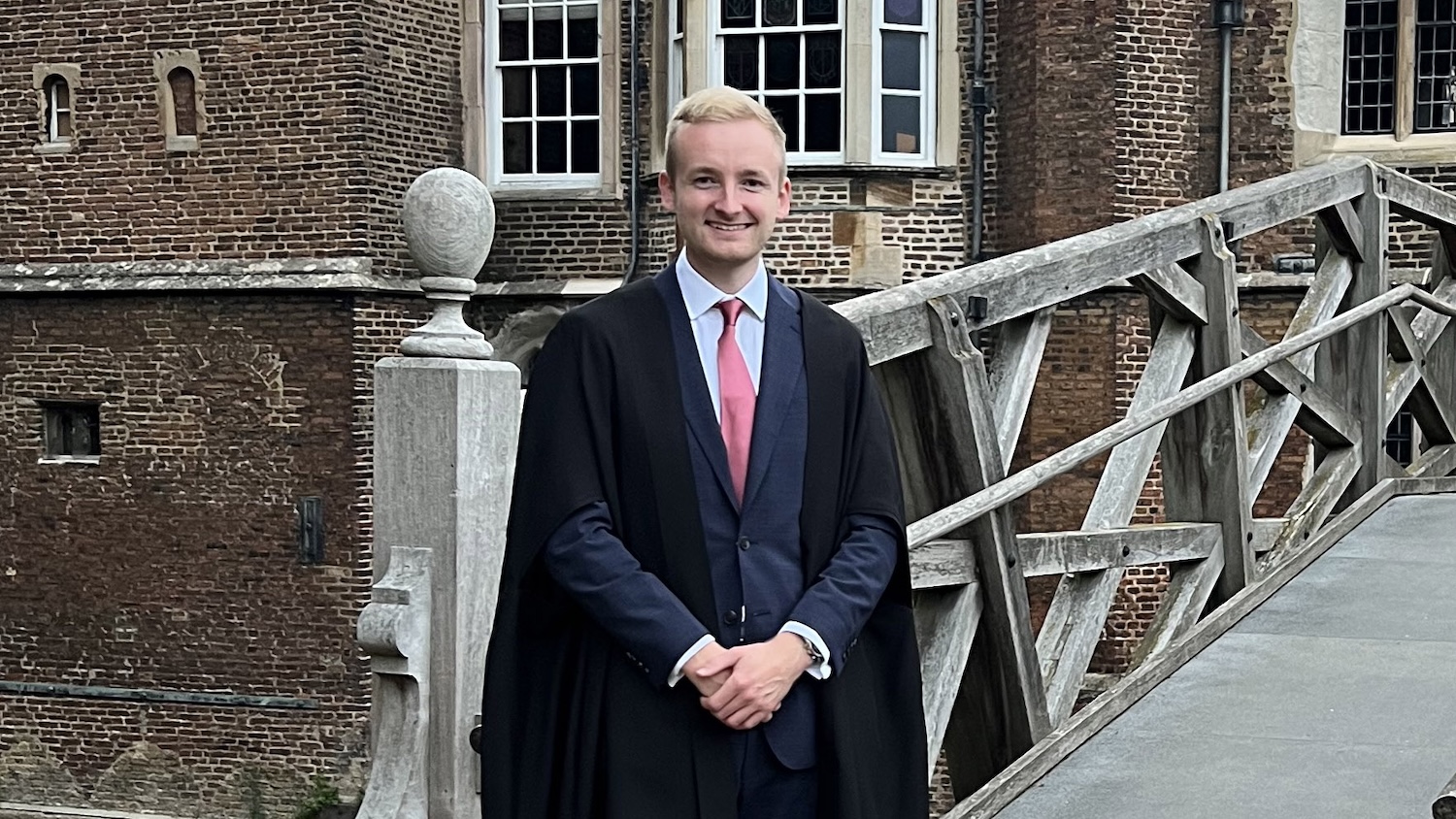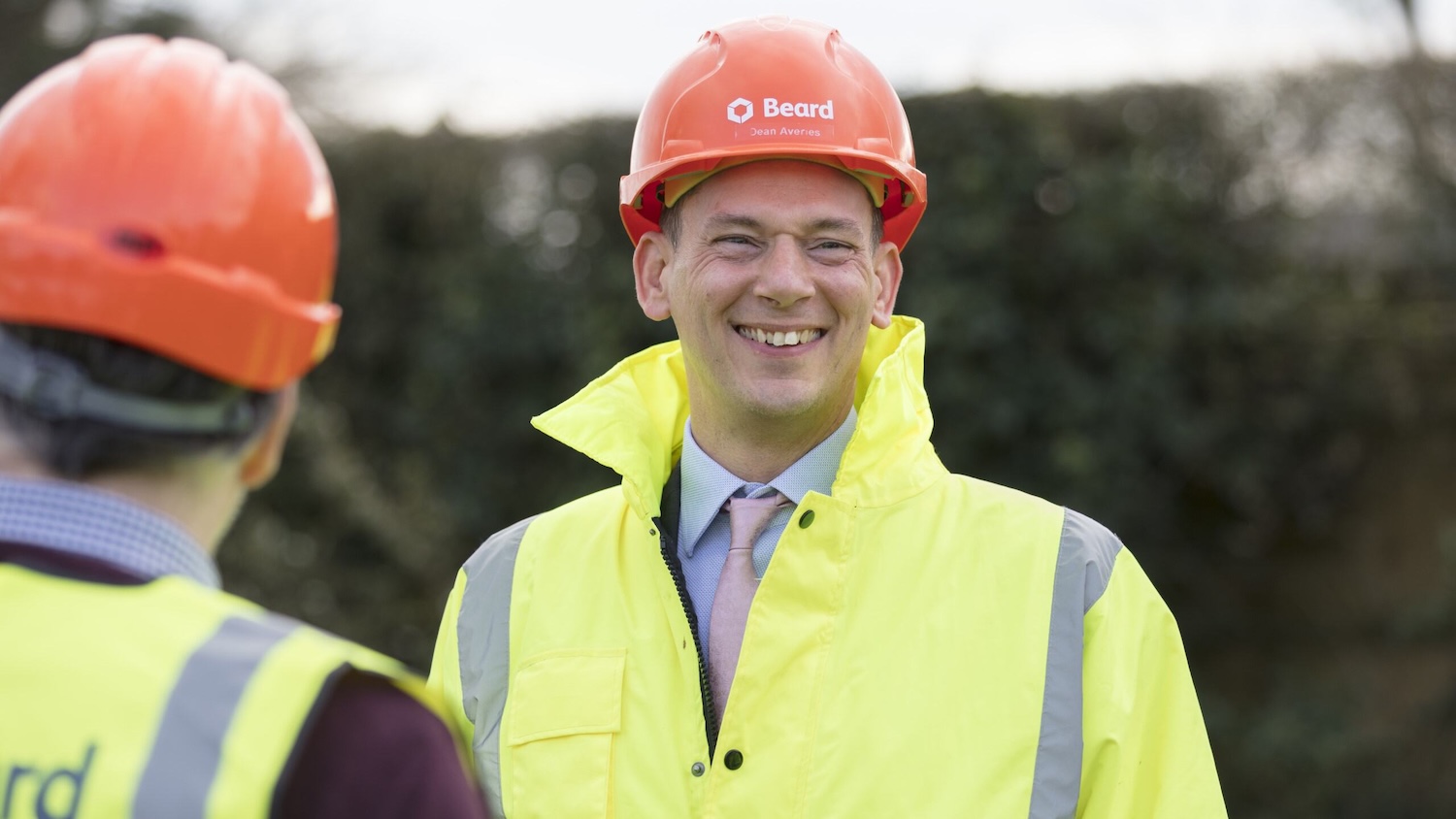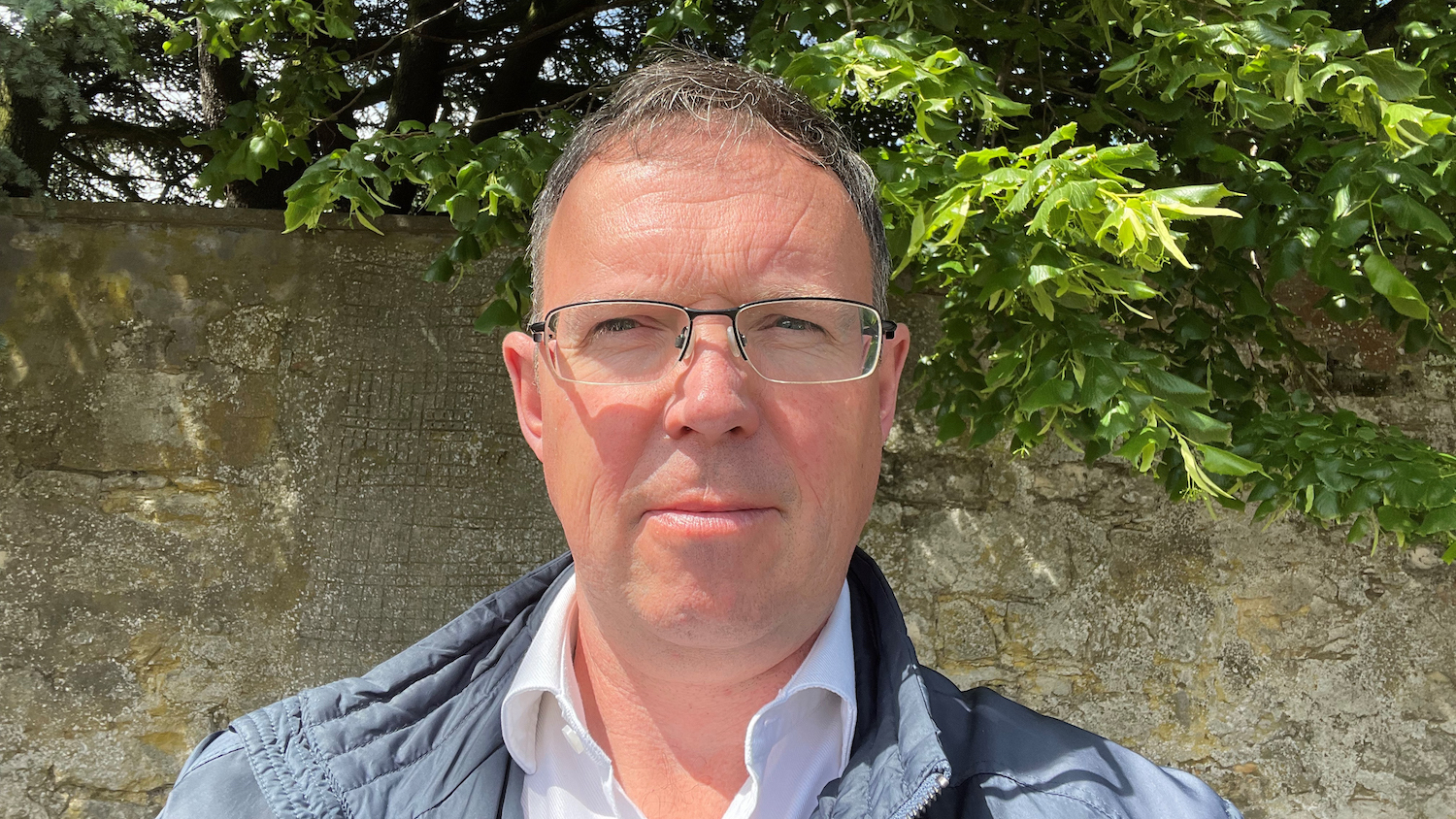
CEnv status: addressing excessive ‘climate anxiety’
To mark World Environment Day, the latest in our series on chartered environmentalists features Andrew Muszynski, who details his passion for sustainability and why he believes there is cause for optimism when it comes to environmental issues
With the UK government committed to cutting carbon emissions to net zero carbon by 2050, built environment professionals have a crucial role to play in the response to climate change.
According to government figures, around 40% of UK carbon emissions are linked to the built environment, with construction activity accounting for approximately 50 million tonnes of carbon emissions a year.
However, for project manager Andrew Muszynski, there is cause for optimism.
“You can have a passion or concern for the environment, but you don’t have to be negative or live in fear of the planet burning,” he says.
“There is far too much climate anxiety. We need to be more optimistic about the potential for the future that new technologies can bring, particularly in the built environment.
“I also believe it generally gives a negative vibe and puts people off. We are part of the solution here and it’s important to frame things in a more positive light.
“We should be trying to be at the forefront to try to push the boundaries.”
What is a chartered environmentalist?
Chartership is a globally recognised mark of achievement that enhances career prospects through establishing proven expertise and experience.
For environmental professionals, chartership reflects a high level of skill and experience, setting chartered environmentalists apart from others working in their field.
Across the world, CEnv registrants utilise their environmental expertise to instil client trust, transition to sustainable practices, lead departments, make strategic decisions, advise governments and work as highly skilled practitioners.
More than 7,500 professionals from a spectrum of fields – including engineering, forestry, ecology, resource management, agriculture, consulting, planning, environmental assessment and air quality – have achieved CEnv registration to date.
Find more information about becoming a CEnv member here.
Staying informed
Muszynski keeps informed about climate and environmental issues through the Chartered Institute of Building (CIOB), the Society for the Environment and the Institute of Environmental Management and Assessment (IEMA).
He brings this focus to his work as an associate at Hardies Property & Construction Consultants – and it is further strengthened by his status as a chartered environmentalist.
He believes the qualification “raises your education and understanding” and allows you to “focus on environmental sustainability and the low carbon agenda”.
“[Anyone can] become familiar with the environment,” he says. “But I will always look at it as a concern for a project manager – whether it’s down to contamination or provision of a sustainable development or building type.”
In addition to his chartered environmentalist status, Muszynski is a fellow of the CIOB and a member of the Royal Institution of Chartered Surveyors and the Association for Project Management.
He also undertook a master’s degree in project management in 2015 at Edinburgh Napier University.
Environmental interest
Muszynski’s environmental interest stretches back years. He studied environmental science in 1990 at Fife College before becoming a construction manager. The recession at the time hit prospects for both, but construction was to boom soon after – a cycle that continues to this day, he adds.
“I grew up in the countryside and was always mindful of the environment, maybe even in advance of its time,” Muszynski says.
In 2003, he co-designed and constructed a self-build family home following Passivhaus principles (pictured below).
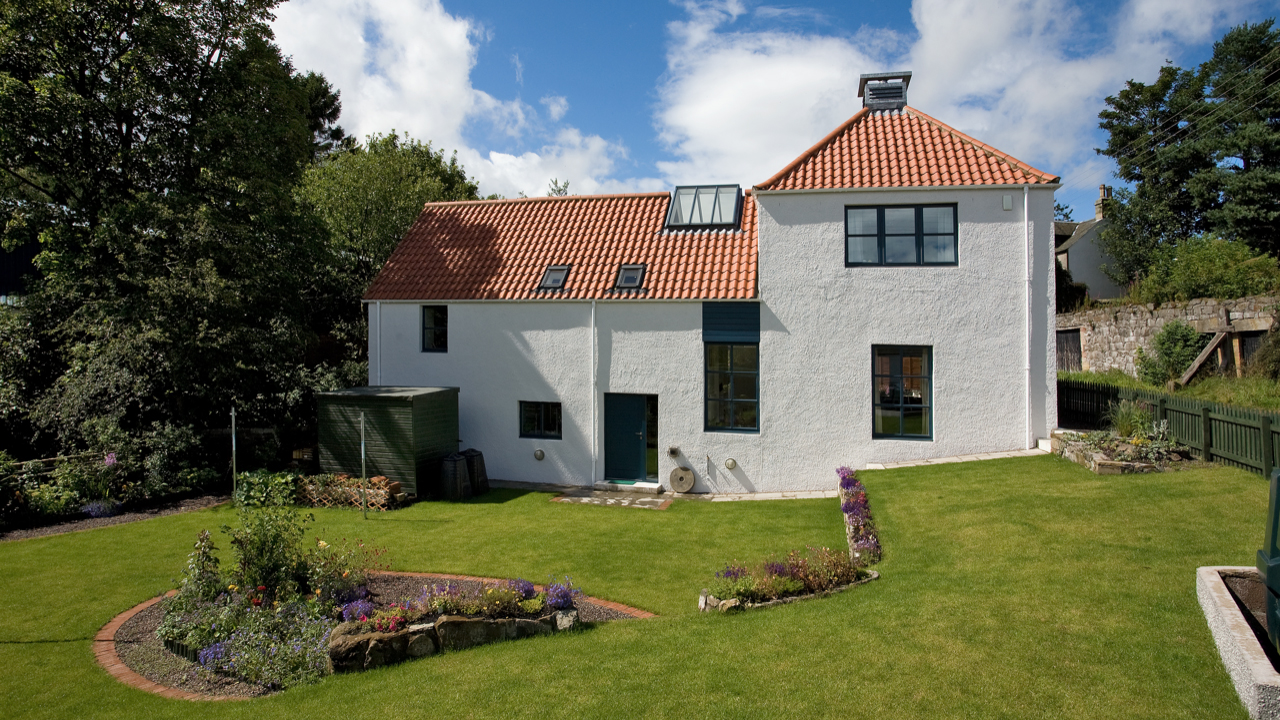
“I was impressed with the liveability in terms of natural daylight, retained heat, limited sound transfer and ease of cooling ventilation – helped in part by the surrounding green space,” he says.
Backing up this interest, and driven by COP26 in Glasgow, Muszynski became a chartered environmentalist in 2021.
He believes the qualification, linked to practice in the built environment, will provide longer term solutions to issues such as lowering carbon, energy demand and fuel poverty.
It has allowed him to gain a greater understanding of the career prospects linked to environmental policy and demand-driven changes in the construction sector.
Projects and sustainability
Muszynski has found himself drawn to projects that consider sustainability, green space and opportunities to enhance biodiversity.
As a construction consultant, he has recently acted as a framework project manager on one of Scotland’s largest local authority Passivhaus affordable housing programmes.
He completed the Passive House Institute Fundamentals training course in advance of taking up the role.
Muszynski understands the importance of developing buildings that are low in embodied carbon and at the forefront of lowering energy usage.
“I took on the project because of my chartered environmentalist qualification,” he explains. “I wanted to explore projects that used that understanding and allowed me to broaden my knowledge.”
It is a timely programme of work: a Scottish government proposal to introduce design standards for all new-build housing to meet a Scottish Passivhaus equivalent goes out to consultation this summer and is likely to be adopted as legislation in December.
Muszynski says it will be “interesting” to see if the Scottish government maintains this commitment to low-carbon building given the recent announcement that it is scrapping the interim 2030 net zero target of 75% reduction.
“Initiatives such as the delayed Heat in Buildings Bill and wider net zero target by 2045 hang in the balance,” he says.
We are part of the solution here and it’s important to frame things in a more positive light. We should be trying to be at the forefront to try to push the boundaries
Fabric first
A fabric first approach is a key element of the Passivhaus standard, which helps to address energy concerns.
For example, the structure is ideally orientated to the sun, windows are high performance, benefiting from solar gain, and the buildings are characterised by thick walls and significant levels of insulation.
“This creates a house with the opportunity to introduce clean forms of heating,” Muszynski explains.
“They are likely to have heat pumps or advanced forms of electrical heating combined with heat recovery.
“In addressing the low carbon agenda in this way, you’re not having to use gas or oil boilers and you’re also addressing tenants’ fuel poverty concerns – they are cheaper to run.”
As with his previous experience of delivering affordable homes, it has been a rewarding programme to work on.
“It’s very important to provide sound, safe, good-quality family homes. We talk about units and housing numbers but, ultimately, these are places to live.”
Other projects
As a client-side housing construction development manager, Muszynski was an environmental champion and co-author of the original Places for People Design Guide published in 2006.
This explored fabric first, energy efficient design with the adoption of tried and tested new technologies. These included the use of district heating systems, ground and air source heat pumps.
“That was fairly at the forefront of its time. There is a hype that comes with a lot of new tech and sometimes being better informed is important as well,” Muszynski says.
The focus was on specifying reliable products and integrating appropriate suppliers – this meant some concepts, such as mini rooftop wind turbines, were quickly discounted.
For Muszynski, other project manager roles have included working under secondment to clients as a corporate office workplace project director, including at Arcadis.
In this role, he explored carbon reduction measures and environmental standards such as BREEAM and LEED.
He also contributed to efforts to introduce the international Well Building Standard, which looks more holistically at how the built environment impacts and enhances human health and wellbeing.
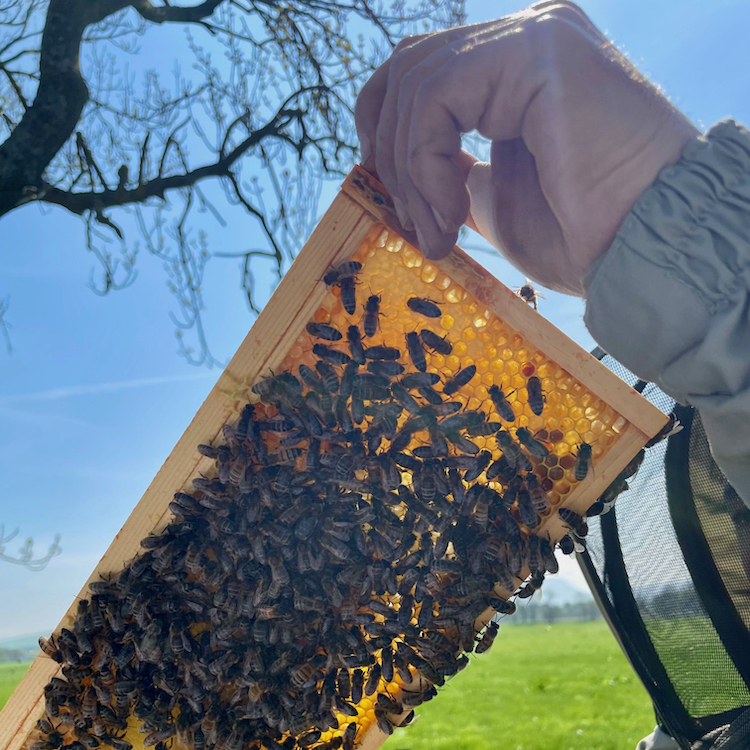
Andrew Muszynski has a keen interest in biophilic design. He is an enthusiastic gardener and keeps bees, so understands the importance of plants
Beyond design and technology, Muszynski has a keen interest in biophilic design. He is an enthusiastic gardener and keeps bees, so understands the importance of plants.
He adds: “It’s interesting to see how standards are changing to ensure the environment is being considered.
“There’s an expectation now that people want efficient homes and improved workplaces.”
Wider considerations
Muszynski believes the global understanding of climate change and overarching trend towards environmental sustainability have seen significant changes in attitudes, policy and practice towards lowering carbon and improving prospects for nature.
It is important to have climate commitments “enshrined in policy, then it starts to become business and the norm”, he adds.
“Corporate clients should be measured and held accountable because if you don’t, you’re at risk of not achieving targets or, at worst, subject to greenwashing.
“As individuals and professionals, we need to get behind this.”
Economic factors
There are, of course, challenges. When there is a dip in economic activity, the environment tends to struggle, Muszynski says.
For example, when cost-cutting measures on housing developments were introduced, trees and landscaping were among the first things to go under value engineering.
“I used to sit with architects and design teams as a developer, client or otherwise,” Muszynski says. “The first things they would remove were aspects of the landscaping because it wasn’t the built environment and they perceived it to be, at the time, of lesser worth.
“[Given the] green space and the environmental themes of the past 10 years, you would probably need to be of a certain age to remember [those kind of attitudes].
“In the not too distant past, the environment was seen as a lesser element, whereas it’s much higher on the agenda today.”
Muszynski believes that socially there is more of “a driving force” these days. “People are more environmentally aware than ever before and much policy reflects this,” he says.
Looking forward
According to Muszynski, the “direction of travel and evidence of climate change is with us all now”.
“It’s not just science; individuals are actually experiencing it, seeing the extremes of weather and impacts in the news,” he says.
“It touches us now on a personal level. People are more informed and the social impetus is behind it now, so I would suggest the time is right to get behind the environment.”
Muszynski adds that people should be “brave and bold in their career choice” and “align with projects and opportunities that have an environmental focus where possible”. He adds: “There’s the self-worth element within that. There is nothing like having a passion for something and thinking you can make a difference.”


